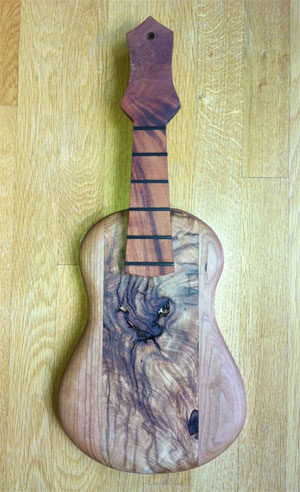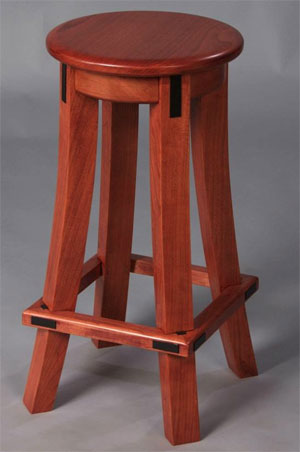
Douglas Nimmo is a practitioner not only of the art of woodworking, but also the art of music. In fact, he is in what he refers to as his “swan year” as a music education professor at Gustavus Adolphus College in Minnesota: when he retires at the beginning of June 2014, he looks forward to having more time to explore and expand his woodworking.
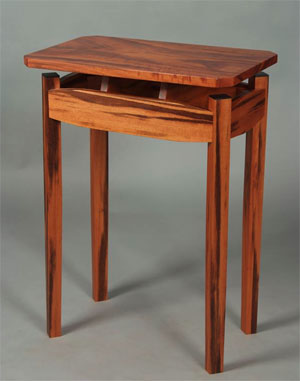
He’s already been doing woodworking for almost as long as he’s been a music educator — about 30 years for one art, 40 years for the other — but “the day job has had to take precedence,” he said.
Like many other woodworkers, he got his start building furniture for his home after growing up influenced by a father who was “the ultimate do-it-yourselfer. I had no idea when I was young that you could actually pay a person to come to your house” to perform a service call, Doug said.
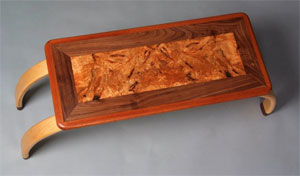
Like composers who are associated with a certain type of music during a certain point in their lives, Doug said he finds his style has evolved throughout his years as a woodworker. At first, when he was building coffee, end and dining tables for his home, he “started out with more straight lines and smaller tables,” he said. “As I continued to build, I started to do a lot more with arcs; in recent years, I’ve done a lot more with arced legs, cut legs, and am also doing more with bent laminations.” An example, he said, is a bench he built with curved legs in which each leg is a sandwich of 12 3/32″-thick walnut laminations, with a 1/16″-thick piece of ebony embedded in both the top and bottom layers.
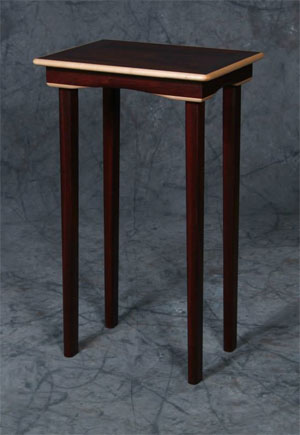
Also, “there was a time I was doing 80 percent of my work with padauk,” he said. While his choice of lumber is now broader, “I happen to think it’s one of the most beautiful lumbers to work with, and I also love the way it evolves over time.”
Speaking of both his music and his woodworking, Doug said, “I think one influences the other for me.” For example, a musician might take a well-known piece of music, such as “The Stars and Stripes Forever,” and take the artistic license to perform it in a slightly different, unexpected manner. Whereas in woodworking, he might start with an expectation, such as building an occasional table, “but then as you build it, it kind of spins out. I tend not to follow a blueprint.
“Both invite creativity,” Doug said. “One is an oral type of creativity: it’s intangible. Music is for the moment you hear it, then it’s gone. Woodworking is not something I hear, but something I see and feel and touch.”
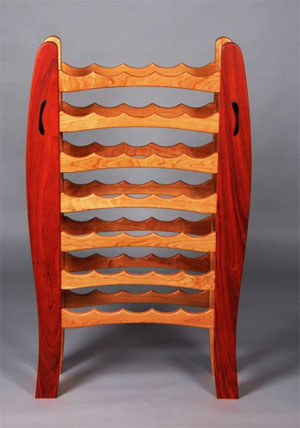
Having conducted the Gustavus Wind Orchestra, averaging around 60 musicians, for the past 27 years, Doug also notes that that experience is “a corporate art. Woodworking is a solitary art. I absolutely love standing on the podium and conducting music, but I also love standing in front of my bench.”
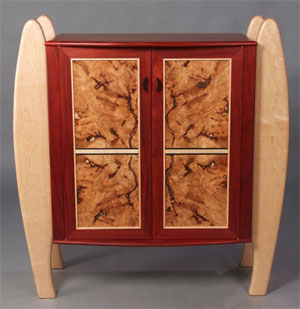
Despite its generally solitary nature, however, Doug has found connections with others through woodworking, particularly when he’s been commissioned to make a piece utilizing lumber or other items that belonged to a person who has passed away. A cabinet he made for the home of a former student’s mother utilized maple burl, which had belonged to the student’s father, on the doors. “It allowed me to connect with son, Mike, and father, Bob, and mother, Mary, in a special way.” Another piece, a dining table built in a Nakashima-like design, used cherry that had belonged to a man named Sam. The owner also asked Doug to embed one of Sam’s stainless steel cufflinks, embossed in abalone with the letter “S,” in the table’s apron. “When I use the pieces of lumber that were owned by the person who died, I find that extraordinarily rewarding,” Doug said.
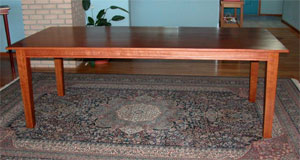
He has also found influence from the styles of other woodworkers, such as James Krenov and George Nakashima, as well as those who work in the Scandinavian style. “That’s my blood background, and I’ve been to Norway and Sweden a number of times. I always walk through the furniture shops and hte art galleries when I’m there.” When showing his work at places like the American Craft Council show, Doug also takes time to speak to other woodworkers, whether about what influences their style or how they’ve accomplished a particular piece of joinery.
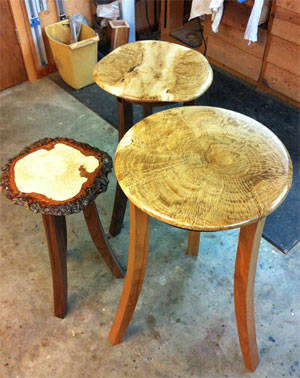
“So much of what we do in art is influenced by the work of great artists who have stepped before me, and plowed the field before me so I would be able to grow.”
